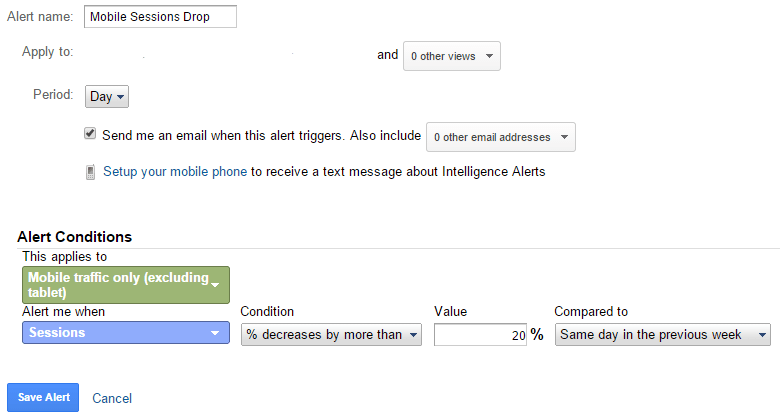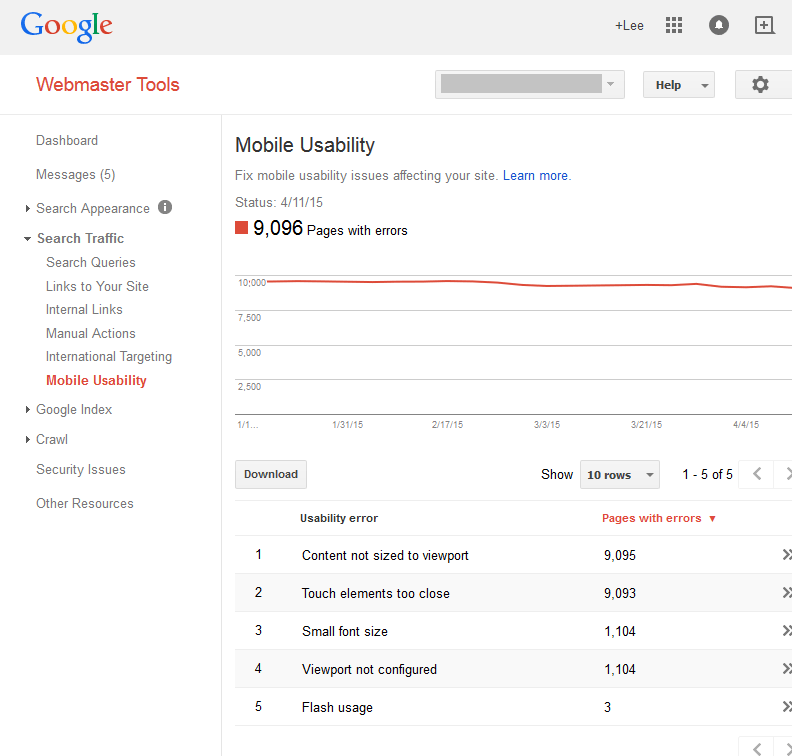How to Measure the Impact of Google’s Mobile-Friendly Update on Your Website
By Intern |18 Apr 2015
On 21 April 2015 Google will release an algorithm update that is likely to affect how your website ranks on mobile devices. On a page-by-page basis, Google will determine if a page is mobile friendly and this will affect the ranking of that page for mobile devices.
Ideally, a fully responsive website is something you should aim towards in your device strategy. However, because the update is page-by-page, businesses can focus their efforts on their best performing mobile pages to actively manage the risk associated with this update.
How to identify your top mobile landing pages through Google Analytics
- Go to your Landing Pages report
- Create a segment for organic mobile Google traffic
- Apply the new segment – This will only show mobile sessions from Google organic
- To access the report quicker next time, create a shortcut and name it appropriately
- Focus on the sessions metric when comparing the data
After 21 April, you will be able to compare ‘before and after’ data using the date range functionality to compare with the previous period. Depending on the amount of daily traffic you receive, you may see the affects within a day.
Top tip: Focus on the number of sessions to your mobile landing pages. The algorithm update won’t affect what users do once they’re on your site; the effect will be in the amount of sessions you get to unfriendly mobile pages.
Setting up a custom alert
You may want to set up a custom alert to receive an email notifying you of a drop in mobile sessions. You can do this on the view level in the admin section, making sure you choose your main reporting view.
You should be able to set up an alert based on the advanced segment you just created. However, unfortunately a known GA bug currently won’t allow this. The next best option is to set up alerts for your current segments that will have an effect.
We’ve set up an alert for mobile traffic drops. The percentage you should choose will depend on how much traffic you get – the higher your traffic, the smaller the change you set the alert up for:
Setting up a custom alert for a decrease in mobile traffic

By setting the alert to compare data to the ‘same day in the previous week’, the effects of seasonality are eliminated. If your traffic is pretty steady throughout the week, you could also use the ‘previous day’ comparison option. You may want to consider setting a similar alert up for tablet traffic.
Top Tip: Cross-reference your findings with Google Webmaster Tools, which will provide you with much more information on usability errors detected on your site. It will also provide accurate data on visibility drops of individual URLs – more accurate than that provided by some SEO rank checker tools.
My site has been impacted – what next?
The only way to resolve this is to make your site mobile-friendly or responsive. If you identify that a particular landing page is showing a significant drop, use the Mobile Friendly Test Tool from Google to check whether Google considers the page to be mobile-friendly. The information you get from this tool will help you to raise the issue as urgent with your developers so that it can be addressed as soon as possible.
If the page is classed as mobile-friendly, there can be a number of reasons why your traffic might be dropping such as:
- Seasonality changes
- A competitor running a campaign
- Your mobile rankings or overall rankings have been impacted by something else
If your site has been impacted by the mobile algorithm update, Fresh Egg offers a range of services that can help – from helping you understand how and why your site has been affected, to designing and building responsive websites.
